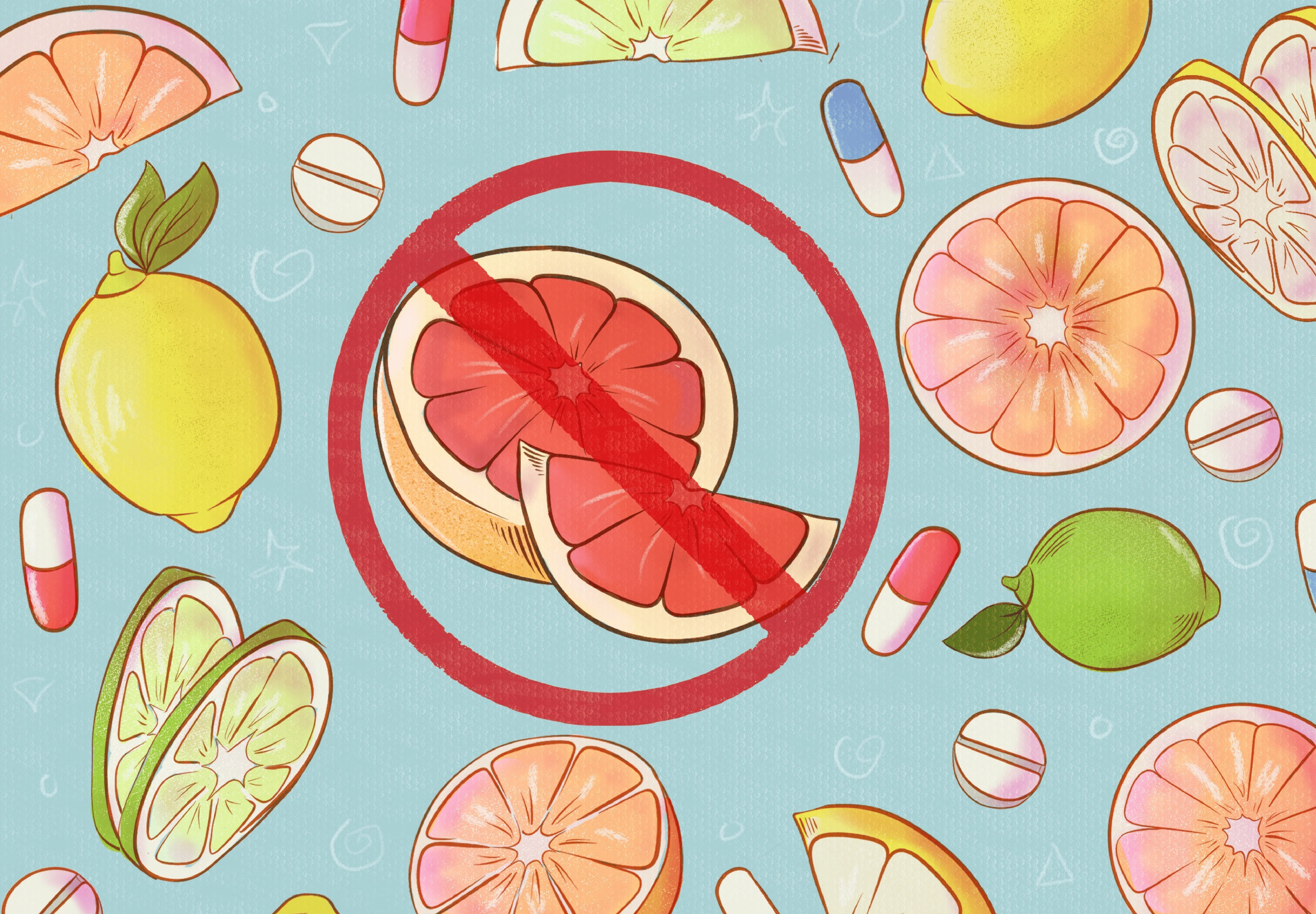On Meds but Can’t Eat
Grapefruit?
Behind grapefruit’s medical warning lies a three-gene mystery–and scientists have solved it
Written by: Arjun Dharan | Edited by: Luke Chang | Graphic Design by: Andrea Torres
Imagine pouring yourself a nice glass of grapefruit juice–zesty, tangy, and refreshing, but then you take a glance at your medication which says: “DO NOT EAT GRAPEFRUIT OR DRINK GRAPEFRUIT JUICE AT ANY TIME WHILE TAKING THIS MEDICATION”. What a pain! If you ever experienced this inconvenience, you are not alone. This warning appears on medications for high blood pressure, high cholesterol, anxiety, and even abnormal heart rhythms. So what’s the deal?
The main troublemaking group of plant chemicals responsible is known as furanocoumarins. Only some citrus fruits, namely grapefruit and pummelos, produce high levels of them, while others–sweet oranges and mandarins–make almost none. Enzymes are substances that increase the speed of chemical reactions. In our bodies, CYP enzymes handle most of the drug breakdown reactions in the body. Studies show that the high furanocoumarin levels from grapefruit reduce the concentration of one of them, CYP3A4. In a study, consuming grapefruit juice slashed a healthy person’s CYP3A4 levels by 47% in just 4 hours. If this person was on grapefruit-sensitive drugs, this means the medication doesn’t get broken down properly, and more are left in the bloodstream–this can have dangerous side effects.
To better understand the genetics behind furanocoumarin production in citrus plants, researchers studied the offspring between furanocoumarin producers, grapefruit and pomelo, with the non-furanocoumarin producer mandarins. Imagine DNA is a long single-sentence cookie recipe with only three-letter words. Each three-letter word tells the cells which protein building block (amino acid) to add and in what order. In this analogy, imagine a gene is a specific section of this recipe, and so each gene gives specific instructions to code particular proteins. The researchers discovered a group of three 2OGD genes in plants that give the instructions to produce high levels of furanocoumarin. Imagine someone then copied and pasted 655 random letters (218 words and 1 extra letter) in the middle of your recipe. This scrambles all the words coming after it so the cell will not be able to create the correct proteins. This 655 base insertion mutation is exactly what happens in citrus that produces almost no furanocoumarins.
This discovery is significant because it gives scientists a clear target location–the exact recipe “typos”–to switch off furanocoumarin production in grapefruits using gene editing. If successful, that could mean that one day, even people on sensitive medications can safely enjoy grapefruit again—no warning labels needed!
These articles are not intended to serve as medical advice. If you have specific medical concerns, please reach out to your provider.

